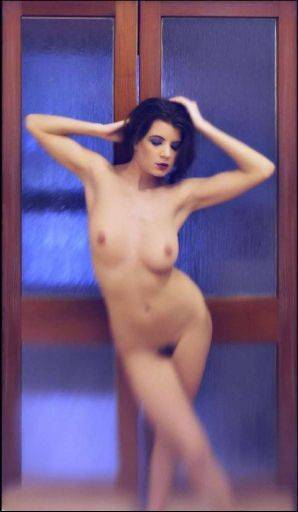You can create easy lomo style images with the lensbaby

THINKING:
A typical way of creating out of focus areas within an image is to use a tilt-shift lens. This type of lens is made principally for architectural photography. It lets the photographer compensate for any tilt in the camera body when angling upwards to capture tall buildings or interiors. By tilting the lens relative to the camera plane you can maintain a greater level of focus regardless of the distance of the subject. Tilt-shift lens are notoriously expensive and quite rare, many camera systems have no tilt-shift lens available.
Which brings us to the LensBaby. This is a relatively cheap system built around a simple manual lens with a ball joint between the front and back half of the optics.
This lets you create all sorts of strange and wonderful tilt-shift effects, with definitely a view to "art" rather than "precision".
SEEING:
Compositionally the blue door frame behind NikiMarie provides strong verticals that the pose follows.
The regularity and simplicity of the pose help to exaggerate the effect of the LensBaby because the lack of focus gets stronger the closer to the bottom of the frame.
The blue light from the glass is perfect colour contrast against the skin tones and I have slightly enhanced this by a faux cross processing effect in post.
DOING:
The blue colour of the glass is actually natural daylight outside the building, but I was shooting colour balanced for interior tungsten light sources - just my office lights. This has given a strong blue shift to the daylight.
Working with a LensBaby is easy; you just twist, push and pull the outer part of the lens to achieve different focussing regions. Focusing (yes, some of it is focussed) is entirely manual.
However, through a small viewfinder in relatively dim light it can be very hard to see exactly what effect you are getting. I recommend shooting a lot to avoid disappointment. When seen on a large computer screen or print you often find that the required area of sharpness is not actually sharp enough, though that was not apparent at the time of shooting.
share:
This is an excerpt from "Art Nude Photography Explained" which shows you how to create nude images and how to read and evaluate art nude photographs
It is available on Amazon
or on
the store